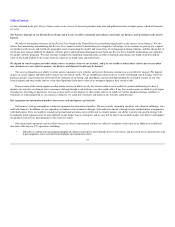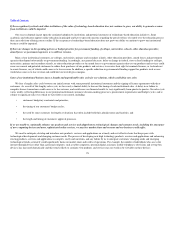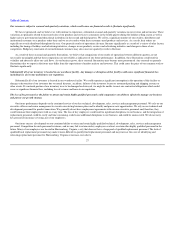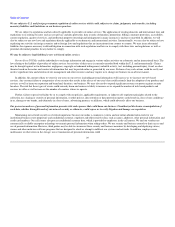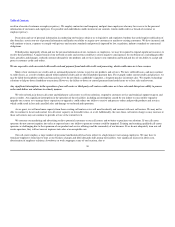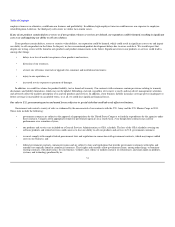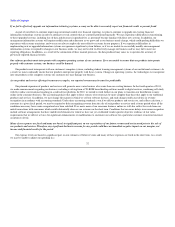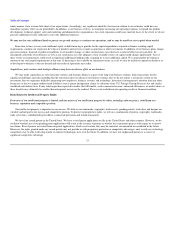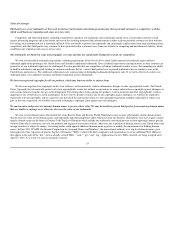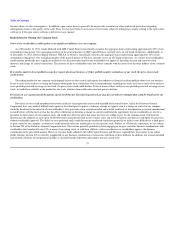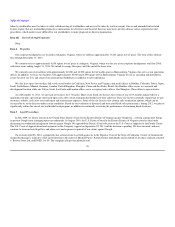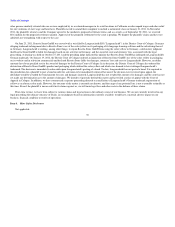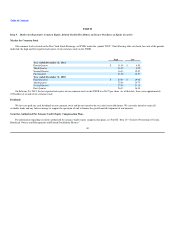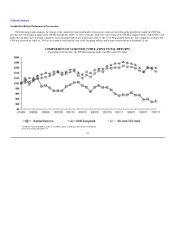Rosetta Stone 2011 Annual Report Download - page 33
Download and view the complete annual report
Please find page 33 of the 2011 Rosetta Stone annual report below. You can navigate through the pages in the report by either clicking on the pages listed below, or by using the keyword search tool below to find specific information within the annual report.
Table of Contents
employee turnover or otherwise, could harm our business and profitability. In addition, high employee turnover could increase our exposure to employee-
related litigation. Likewise, the third-party call centers we utilize face similar issues.
If any of our products contain defects or errors or if new product releases or services are delayed, our reputation could be harmed, resulting in significant
costs to us and impairing our ability to sell our solutions.
If our products contain defects, errors or security vulnerabilities, our reputation could be harmed, which could result in significant costs to us and impair
our ability to sell our products in the future. In the past, we have encountered product development delays due to errors or defects. We would expect that,
despite our testing, errors will be found in new products and product enhancements in the future. Significant errors in our products or services could lead to,
among other things:
delays in or loss of market acceptance of our products and services;
diversion of our resources;
a lower rate of license renewals or upgrades for consumer and institutional customers;
injury to our reputation; or
increased service expenses or payment of damages.
In addition, we could face claims for product liability, tort or breach of warranty. Our contracts with customers contain provisions relating to warranty
disclaimers and liability limitations, which may not be upheld. Defending a lawsuit, regardless of its merit, is costly and may divert management's attention
and adversely affect the market's perception of us and our products and services. In addition, if our business liability insurance coverage proves inadequate or
future coverage is unavailable on acceptable terms, or at all, we could face significant financial losses.
Our sales to U.S. government agencies and armed forces subject us to special risks that could adversely affect our business.
Government sales entail a variety of risks as evidenced by the non-renewal of our contracts with the U.S. Army and the U.S. Marine Corps in 2011.
These risks include the following:
government contracts are subject to the approval of appropriations by the United States Congress to fund the expenditures by the agencies under
these contracts. Congress often appropriates funds for government agencies on a yearly basis, even though their contracts may call for
performance over a number of years;
our products and services are included on a General Services Administration, or GSA, schedule. The loss of the GSA schedule covering our
software products and related services could cause us to lose our ability to sell our products and services to U.S. government customers;
we must comply with complex federal procurement laws and regulations in connection with government contracts, which may impose added
costs on our business; and
federal government contracts contain provisions and are subject to laws and regulations that provide government customers with rights and
remedies not typically found in commercial contracts. These rights and remedies allow government clients, among other things, to terminate
existing contracts, with short notice, for convenience, without cause, reduce or modify contracts or subcontracts, and claim rights in products,
systems, and technology produced by us.
31
•
•
•
•
•
•
•
•
•




